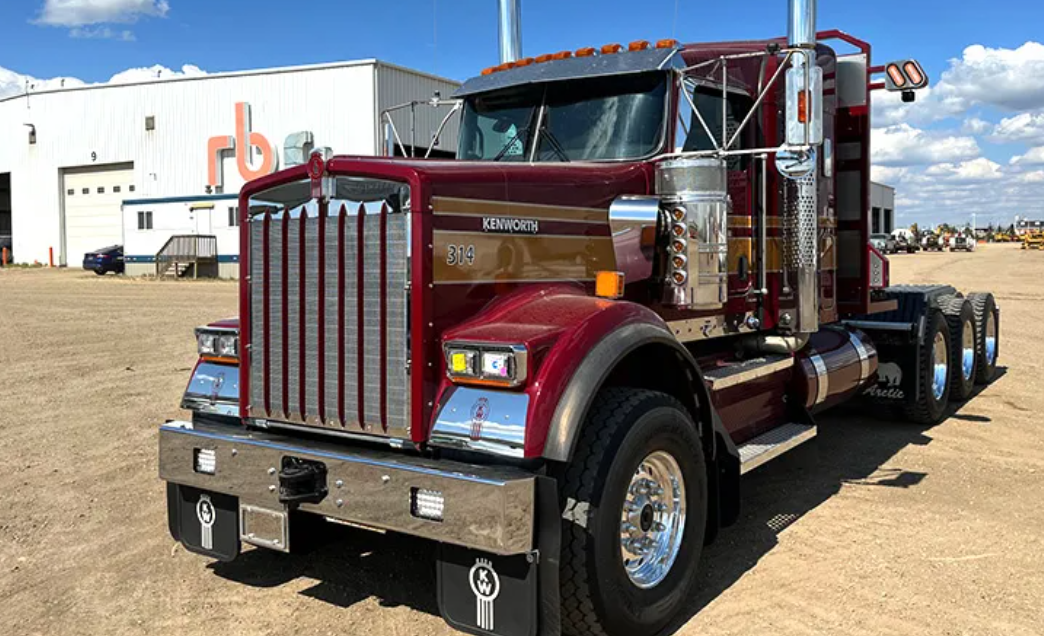Written by: Bloom Services

For truck drivers, navigating extreme weather conditions is a perennial challenge, one that necessitates a fine balance between adhering to delivery schedules and ensuring personal safety. This comprehensive guide is designed to arm truckers with the knowledge and strategies needed to safely manage a range of severe weather conditions, from heavy snowfall and hurricanes to the unpredictable menace of tornadoes.
Trucker Preparation
Proactive preparation is the cornerstone of a trucker’s strategy to deal with weather emergencies effectively. Given the unpredictable nature of weather and its potential to rapidly escalate into hazardous conditions, truck drivers must prioritize preparedness to ensure their own safety, as well as the security of their cargo. This preparation involves several key steps that truckers can take well before they encounter adverse weather conditions on the road.
Stay Informed
Truckers should consult reliable weather forecasting sources to gain insights into the conditions they might face along their route. Tools such as the National Weather Service offer real-time weather updates and forecasts that can help drivers anticipate and plan for adverse weather. Understanding the weather patterns and being aware of any warnings or watches in effect allows drivers to make informed decisions, such as rerouting their trip or adjusting their departure times to avoid the worst of the weather.
Semitruck Readiness
Regular maintenance checks are crucial. Ensure your tires, brakes, lights, windshield wipers, heaters, and defrosters are in top condition. Equip your vehicle with chains for winter and verify the cooling system and air conditioning are operational for summer heat.
Emergency Kit
Equip your truck with an emergency kit that caters to the season. This kit should include basic supplies like water, non-perishable food, warm clothing, a flashlight with extra batteries, a first-aid kit, blankets, and necessary medications. For winter, additional items such as ice scrapers, snow brushes, and extra warm clothing can be lifesavers, while extra water and sun protection are critical in summer. This kit ensures that, should a driver be stranded or delayed due to the weather, they have the necessary resources to stay safe until conditions improve or help arrives.
By taking these steps, truckers not only enhance their own safety but also contribute to the safety of others on the road. This level of preparedness allows drivers to face weather emergencies with confidence, knowing they have taken all possible measures to mitigate the risks associated with extreme weather conditions.
Driving Techniques in Challenging Weather Conditions
Different weather scenarios demand specific adjustments to driving habits to navigate roads safely. Understanding and implementing these techniques can significantly reduce the risk of accidents and ensure timely and secure delivery of cargo.
Trucking in Heavy Rain and Floods
In heavy rain and floods, visibility and traction are significantly reduced. Truckers should reduce their speed to maintain control and increase their following distance to allow more reaction time. Using headlights is essential to improve visibility, not just for the trucker but also to ensure other road users can see the truck. It’s important to avoid driving through flooded areas, as water can be deeper than it appears and can lead to hydroplaning or loss of vehicle control.
Trucking in Snow and Ice
Snow and ice present particularly hazardous conditions, requiring even greater caution. Slow down to account for reduced traction and increase following distances. Use gentle maneuvers when steering, accelerating, or braking to avoid skids. Chains or snow tires can provide additional traction. If the vehicle begins to slide, truckers are advised to steer in the direction of the slide to regain control. Planning routes that avoid hills or steep grades whenever possible is also wise, as these can be challenging to navigate in icy conditions.
Trucking in High Winds
In high winds, especially those accompanying storms or crossing open areas, high-profile vehicles like trucks are at risk of being pushed off course. Reducing speed can help maintain control. Drivers should grip the steering wheel firmly and be prepared for sudden gusts. Parking the truck at an angle that faces the wind can also help reduce the risk of being overturned when stopped.
Trucking in Extreme Heat
During extreme heat, the primary concerns are tire blowouts and engine overheating. Regularly check tire pressure and the coolant system to ensure they are within operational parameters. High temperatures can also affect the driver’s alertness and comfort, so staying hydrated and taking regular breaks to cool down are essential.
Visibility is a critical factor in all adverse weather conditions. Truckers should always ensure their lights and reflectors are clean and functional. Using fog lights in foggy conditions can improve visibility, but high beams should be avoided as they can reflect off the fog and worsen visibility.
Trucking Defensive Driving
Lastly, the principle of “defensive driving” becomes even more important in adverse weather conditions. This means being constantly aware of the surrounding traffic, road conditions, and weather updates, and being prepared to react calmly and efficiently to unexpected situations.
Tornado Safety
Tornadoes present a unique danger, characterized by their sudden occurrence and potential for devastation. Recognizing the early signs of tornadoes, such as intense rain, gusty winds, and large hail, is critical. Monitor local radio or NOAA Weather Radio for tornado watches and warnings and follow social media for real-time alerts specific to your route.
If a tornado threatens, seek shelter immediately in a FEMA storm shelter or a sturdy building. Avoid manufactured homes and overpasses, which do not provide adequate protection. If no shelter is available, stay in your truck with the seat belt on and head below windows, or find a low spot outside, like a ditch, to lie down in.
Communication
Maintain open communication with your dispatcher or fleet manager, especially when delays are anticipated. They can offer valuable insights on weather and road conditions or suggest safer routes.
Recognize when conditions are too severe to continue. In such instances, it’s safer to pull over in a secure location and wait out the adverse weather.
Successfully navigating extreme weather conditions demands thorough preparation, cautious driving, and a readiness to adapt to changing situations. By adhering to these guidelines, truckers can safeguard their safety, the integrity of their loads, and the efficiency of their deliveries, irrespective of the weather challenges they encounter on the road.
Bloom Services, Inc
Here at Bloom Services, we are 100% OTR trucking. We offer newer trucks, and cover trailer and cargo liability. We do not pay base on mileage, rather we pay 82% gross load. This is beneficial for strong drivers with a decent work ethic, you will earn based on the actual load rather than mere miles. Our drivers average $3,000 plus a week take home pay after all expenses, like fuel, truck rent, etc. If you have Grit, and the endurance to consistently deliver loads and run for at least three weeks at a time, you can take home $150K a year. If you are interested, apply now.



office & Parking depot
5120 Belmont Rd Unit K, Downers Grove, IL 60515, USA
Hours of operation
Mon - Sun: 7am-5pm
